Right now Semana Santa, or Holy Week, is in full swing in Spain. Or it would be if it wasn’t raining like crazy. As I am writing this I can hear the crowds of people outside my apartment and the boom boom boom of the processional drums. Easter is celebrated a bit differently here in Spain. No dyed eggs or chocolate bunnies, no pastel colored dresses and bonnets and peep candies. Semana Santa is a thoroughly Catholic holiday, and a big deal in Spain, especially in the south.
Last year I was living in Córdoba, and I stuck around for Semana Santa to see what the big deal was (see my post here). It was an incredible week, with a festive, exciting air, running around the city to check out the best processions and floats, camp out and get the best spot to watch everything. If you have never been to a Semana Santa before, it can be kinda strange. If you are an American, REALLY strange since everyone is dressed up in capes, hoods and tall pointy hats just like the KKK. But don’t worry, they’ve been doing this for centuries.
So here is a quick post on what you need to know about Semana Santa in Spain. Enjoy!
*Tip: pick up a booklet in a bar or cafe that lists out all the processions, times, and places, so you can make the most of your week.
Have you ever been to a Semana Santa procession? Did you find it baffling? What did you think of this celebration of Easter?
Nazarenos
These are the hooded KKK guys. Nazarenos are penitents, they are members of a church brotherhood (cofradía), and they walk in the Semana Santa processions, and they can be men, women and children. Some of the hardcore nazarenos walk barefoot or with chains around their ankles. They usually carry a tall candle or a cross, lanterns, or swinging stinky incense around at unsuspecting crowds and direct the processions from behind the eyeholes of their hoods. Honestly, it’s kind of creepy until you see one that is 3 feet tall tripping over its cloak. Then it’s not so scary.
Cofradía
A cofradía is a confraternity, or a brotherhood for a church in Spain, they each have their own processions, with names like Paz, Amor, and Ezperanza. They all wear different color robes and candles. They start processing around 5 in the afternoon for around 6 hours, sometimes longer, with several processions going on at the same time. Talk about traffic jams. I don’t really know what they do outside of Semana Santa, a lot of catholic stuff I think. I imagine secret society, meetings in dungeons, crazy animalistic rituals, but that’s just my active imagination. Up here in the north, in a town near Logroño called San Vicente is famous because it’s cofradía whips their backs during the processions. Hardcore.
Capirote
This is the name of the tall pointy penitent hat worn by the nazarenos.
Girl collecting the wax from the candles
Pasos
These are the elaborate floats carried during the Semana Santa processions. Usually there are two. One is of the virgen surrounded by candles and covered with a canopy, while the other is usually bigger depicting a scene of Jesus around Easter. These pasos can weigh up to 5 tons and in Córdoba they are carried on the neck and shoulders of the costaleros. The pasos have legs so they periodically stop and set it down to rest. Sometimes they dance together to the music played by the marching bands and jump with the paso, an incredible sight. These pasos are huge and very tall. It is impressive to see them squeeze down the narrow streets, go up stairs, and enter or leave the doors of the church.
Costaleros
These are the burly men who carry the pasos, though I did see one procession that was done by all women. Right on! It literally means “sack men” because of the cloth they pad their neck with to carry the paso. I like to watch their feet as they shuffle by carrying the paso. Sometimes you see them pop in and out for a smoke and beer break. Carrying 5 tons is a lot of work!
Mantilla
These are the women who walk behind the pasos dressed all in black wearing a black lace veil over the back of their heads, carrying rosaries and looking very sad. The lace is called mantilla.
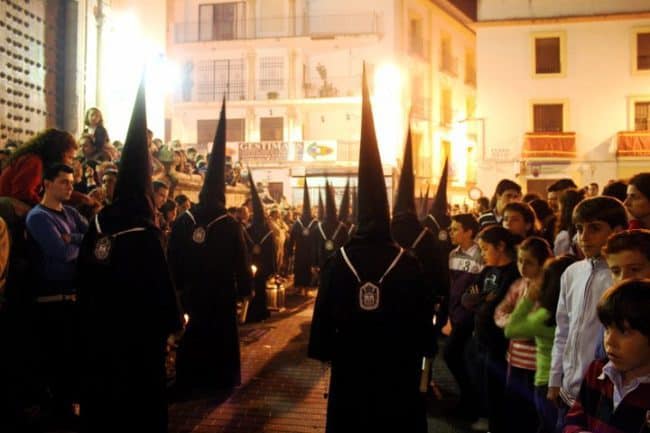
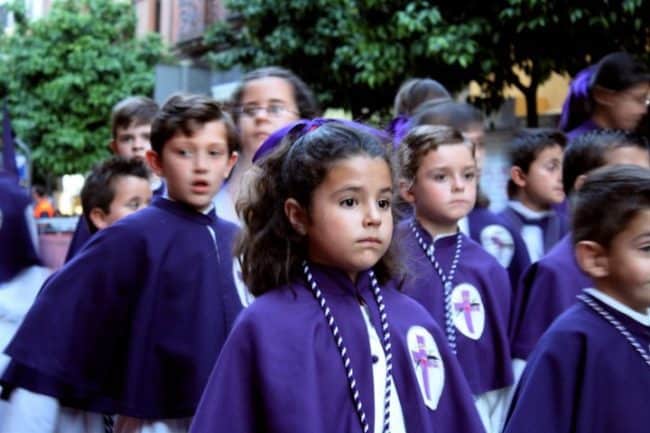
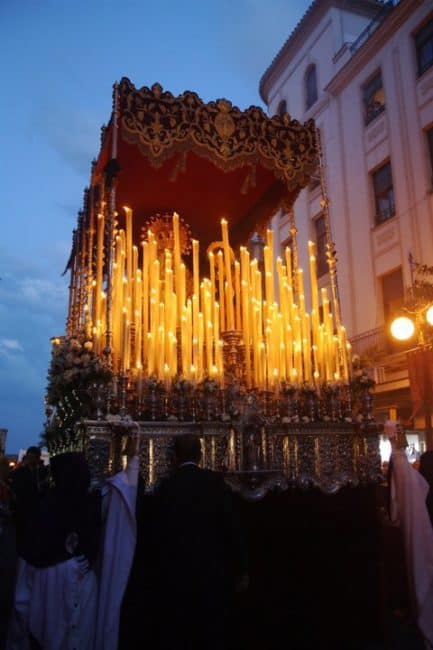

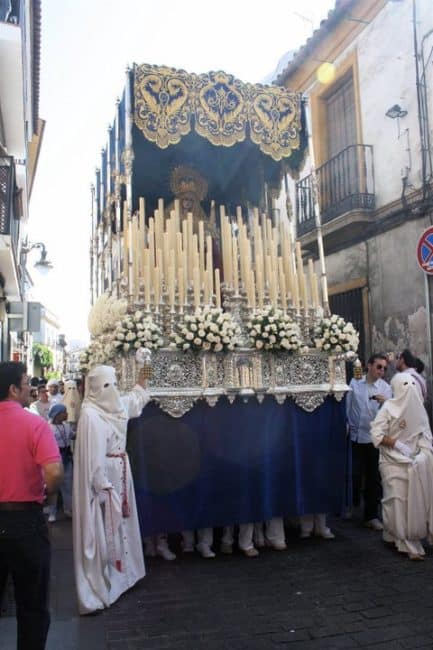
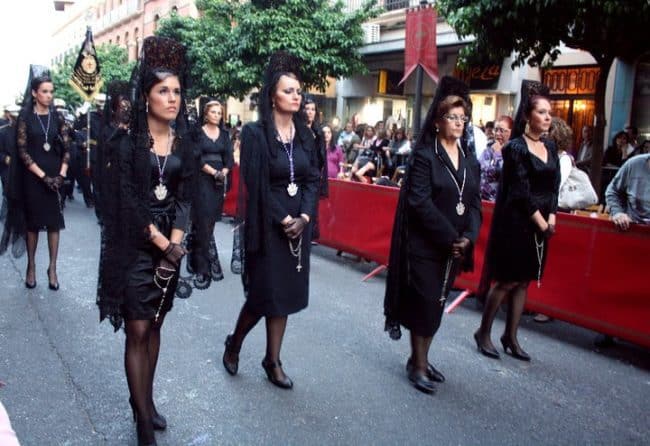
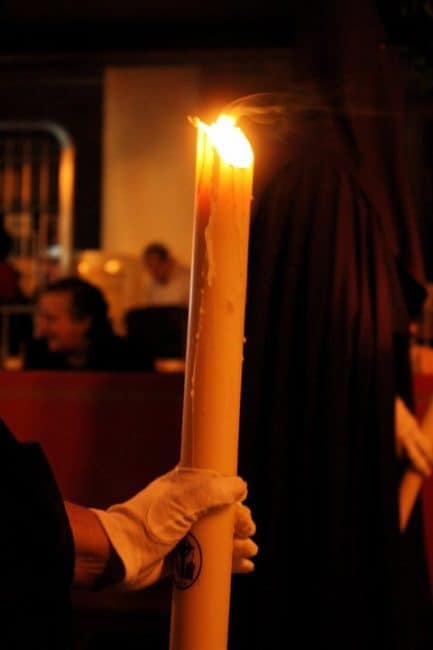
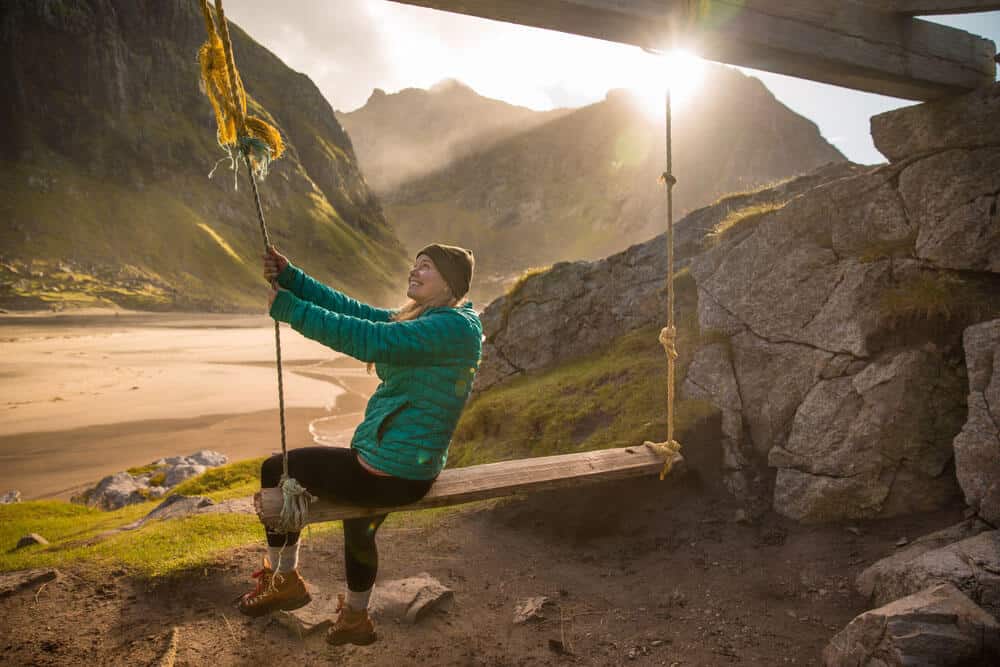
it is definitely worth experiencing at least one time in your life. I always tried to imagine what foregin kids must think when they see the processions, must be pretty scary if you arent accustomed to it.
Great post, Liz. Very helpful!
I love the mantillas on the women. Zamora’s all-female procession was just featured on the Wall Street Journal. Last year, one lady who was wearing the mantilla let me see it. It seems like kind of a pain in the ass! But I know, I know, it’s all for a greater good.
Thanks for this! Our children are young and so I han’t looked into the names and vocabulary linked with semana santa. You have done the work for me!
Although Mijas is a small village, the procession is very impressive. We plan to experience Malaga capital one year but will wait until the children are older as it can be pretty daunting.
I truly can’t wait to experience this next year!!! I must admit though…being an African-American woman from the South…when I first saw pictures of the Nazarenos, I nearly rethought the idea of living in Spain…but I forced myself to do some research and I can’t wait for the shock of sending my mother pictures of this *evil laugh*